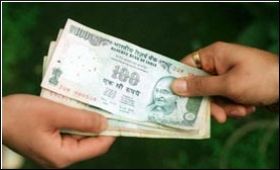|
|
|

|
Cos finding domestic markets increasingly attractive: ASSOCHAM
|
|

|
|
| Top Stories |
 |
|
|
|
Staff Reporter | 08 Apr, 2009
Demand in India's urban areas may be dwindling, but a leading industry group says the hinterland is becoming increasingly attractive for manufacturers of consumer products and automobiles, as well as organised retail businesses.
The Associated Chambers of Commerce and Industry of India (ASSOCHAM), in a report titled "The Rise of Rural India" released on Tuesday, said companies in the fast moving consumer goods (FMCG) sector have recorded higher growth in rural market, which has contributed substantially to their bottomlines.
"Majority of FMCG firms such as DCM, ITC have been recording higher growth rate and sales of their product in rural areas as compared to urban markets," the report said.
India's FMCG industry is currently estimated at Rs.200,000 crore. Of this, domestic consumption accounts for Rs.17,189 crore.
"FMCG sector in rural areas is expected to grow by 40 percent as against 25 percent in urban areas," said ASSOCHAM president Sajjan Jindal.
"Rising rural incomes, healthy agriculture growth, boost in demand, rising consumerism across India, better penetration of FMCG products in the rural market are contributing to high growth and rapid expansion of the FMCG industry in rural India," he added.
Traditionally, for the auto industry, the rural market has been largely restricted to tractors and two-wheelers, though the penetration of scooters and motorcycles in villages is only 10 percent, as compared to 25 percent in urban areas.
The reason for low penetration in the countryside: the high investment involved, poor conditions of rural roads, lack of finance facility and shortage lack of service network.
However, the report said, auto firms have of late begun tapping the countryside. For instance, Maruti Suzuki generates 10 percent of its sales from rural sales, amounting to 32,000 cars.
Maruti has even launched a rural India-specific marketing campaign, the "Ghar Ghar Mein Maruti (Maruti in every household)".
Similarly, two-wheeler major Hero Honda is planning to cover 100,000 of the estimated 600,000 villages in India by the end of this financial year under a campaign called "Har Gaon, Har Aangan (Every village, every household)".
Mahindra and Mahindra, which manufactures passenger cars, now plans to foray into the two-wheeler segment targeting India's hinterland with an initial investment of Rs.110 crore, ASSOCHAM observed.
It also noted Hyundai's interest in the rural areas, where the auto manufacturer feels almost 50 percent of the 220 million households are potential car buyers.
Like Maruti and Hero Honda, Hyundai too has launched a promotional scheme, targeted at rural India, under which it will offer special schemes for government employees and members of village administrations to sell its compact car Santro.
The report said the growing liquidity in rural areas was on account of subsidies to farmers and increase in output of agri-products.
Another potential area, ASSOCHAM said, was the rural retail market - currently estimated at $112 billion, or around 40 percent of the $280 billion retail market.
The industry group said this was expected to double in the next four to five years, though only about 10,000 out of India's 600,000 villages have access to organised retail services.
|
|
|
| |
|
|
|
|
|
|
|
|
|
|
|
|
|
|
| |
| Customs Exchange Rates |
| Currency |
Import |
Export |
US Dollar
|
84.35
|
82.60 |
UK Pound
|
106.35
|
102.90 |
Euro
|
92.50
|
89.35 |
| Japanese
Yen |
55.05 |
53.40 |
| As on 12 Oct, 2024 |
|
|
| Daily Poll |
 |
 |
| Do you think Indian businesses will be negatively affected by Trump's America First Policy? |
|
|
|
|
|
| Commented Stories |
 |
|
|
|
|
|
| |
|